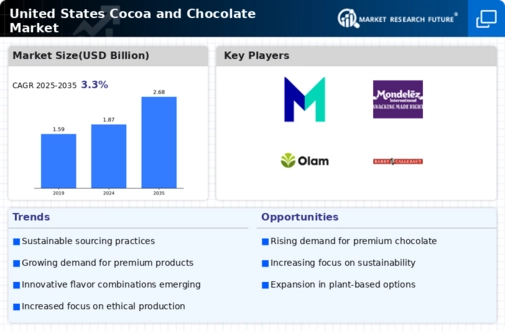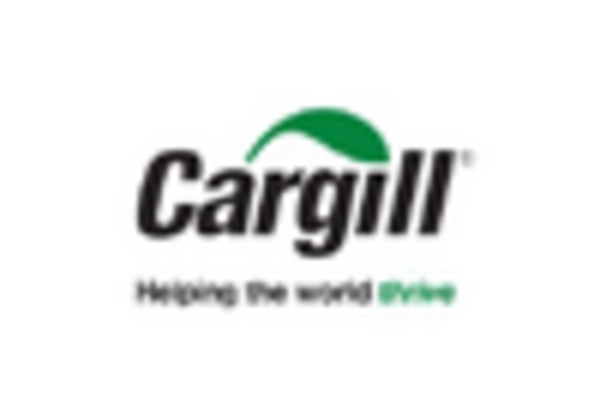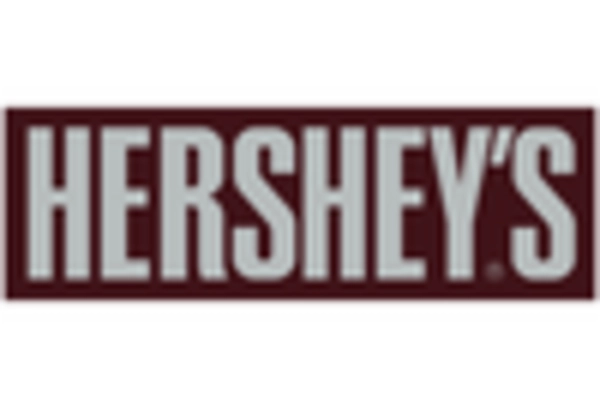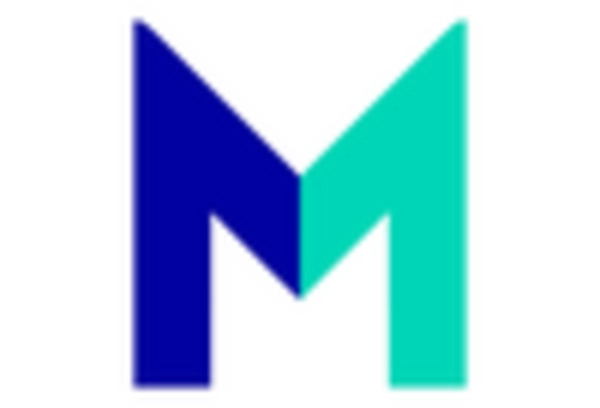Expanding Distribution Channels
The distribution landscape of the United States Cocoa and Chocolate Market is evolving, with an increasing number of channels available for reaching consumers. E-commerce platforms are gaining traction, allowing brands to connect directly with customers and expand their market reach. Traditional retail channels, including supermarkets and specialty stores, continue to play a vital role, but the rise of online shopping is reshaping consumer purchasing behaviors. By 2025, it is anticipated that a substantial portion of chocolate sales will occur through online channels, indicating a shift in how consumers access and purchase chocolate products.
Rising Demand for Premium Chocolate
The United States Cocoa and Chocolate Market is experiencing a notable shift towards premium chocolate products. Consumers are increasingly seeking high-quality, artisanal chocolates that offer unique flavors and textures. This trend is driven by a growing appreciation for gourmet experiences and a willingness to pay a premium for superior quality. In 2025, the market for premium chocolate is projected to account for a significant portion of overall chocolate sales, reflecting a robust growth trajectory. As consumers become more discerning, brands that emphasize quality, craftsmanship, and ethical sourcing are likely to thrive in this competitive landscape.
Sustainability and Ethical Sourcing
Sustainability has emerged as a critical driver within the United States Cocoa and Chocolate Market. Consumers are increasingly concerned about the environmental and social impacts of their purchases, leading to a demand for ethically sourced cocoa. Brands that prioritize sustainable practices, such as fair trade certification and environmentally friendly production methods, are likely to gain a competitive edge. As of 2025, a significant percentage of consumers express a preference for products that demonstrate a commitment to sustainability, suggesting that companies must adapt to these expectations to maintain market relevance.
Increased Focus on Health and Wellness
Health and wellness trends are profoundly influencing the United States Cocoa and Chocolate Market. Consumers are gravitating towards products that align with their health-conscious lifestyles, leading to a surge in demand for dark chocolate and organic options. The market for dark chocolate, known for its potential health benefits, is expected to grow substantially, with sales projected to reach several billion dollars by 2025. This shift indicates a broader consumer preference for indulgent yet healthier alternatives, prompting manufacturers to innovate and reformulate products to meet these evolving demands.
Technological Advancements in Production
Technological innovations are reshaping the United States Cocoa and Chocolate Market, enhancing production efficiency and product quality. Advances in processing techniques, such as improved fermentation and conching methods, are enabling manufacturers to create chocolates with superior flavor profiles. Additionally, automation and data analytics are streamlining operations, reducing costs, and improving supply chain management. As these technologies continue to evolve, they may provide companies with the tools necessary to meet the growing demand for diverse and high-quality chocolate products, thereby driving market growth.


















Leave a Comment